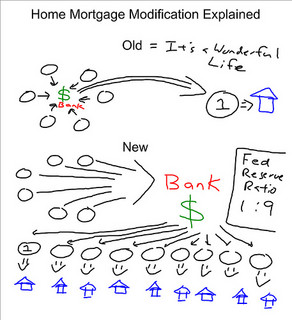For tax purposes, housing debt that is forgiven or written off is treated the same as income. The difference between the short sale price, or price at a trustee’s sale, and the loan balance may be forgiven debt. It can be considered income, which is reported by the lender on form 1099-C. The Mortgage Debt Forgiveness Act, which applies if the debt was forgiven in years 2007 through 2012. This requires that the debt was incurred to buy or substantially improve the taxpayer’s principal residence. This includes a refinance loan, to the extent that the principal balance of the old mortgage would have qualified. Taxpayers concerned with whether their forgiven debt qualifies should consult with an experienced Sacramento and El Dorado real estate attorney.
 The Mortgage Debt Forgiveness Act requires that the debt was incurred to buy or substantially improve the taxpayer’s principal residence. This includes a refinance loan, to the extent that the principal balance of the old mortgage would have qualified. Up to $2 million of forgiven debt is eligible for this exclusion ($1 million if married filing separately). The amount of debt forgiven must be reported on your tax return. The act first extended such relief for three years, applying to debts discharged in calendar year 2007 through 2009; with the Emergency Economic Stabilization Act of 2008, this tax relief was extended another three years, covering debts discharged through calendar year 2012.
The Mortgage Debt Forgiveness Act requires that the debt was incurred to buy or substantially improve the taxpayer’s principal residence. This includes a refinance loan, to the extent that the principal balance of the old mortgage would have qualified. Up to $2 million of forgiven debt is eligible for this exclusion ($1 million if married filing separately). The amount of debt forgiven must be reported on your tax return. The act first extended such relief for three years, applying to debts discharged in calendar year 2007 through 2009; with the Emergency Economic Stabilization Act of 2008, this tax relief was extended another three years, covering debts discharged through calendar year 2012.
 The forgiven debt may also be excluded from your income if:
The forgiven debt may also be excluded from your income if:
 California Real Estate Lawyers Blog
California Real Estate Lawyers Blog


 In
In  In
In  In
In  The Association filed a petition, and the court set a hearing date. The judge required homeowners are to be given notice by mail Friday August 13, 2010, and any written opposition from homeowners be filed by the following Tuesday, August 17, only four days later. Usually in legal proceedings, five days are added for mailing. If ,on January 1, I mail to you a motion, it is not deemed received by you until January 5. (Civil Code section 1013) But that was not considered in this case.
The Association filed a petition, and the court set a hearing date. The judge required homeowners are to be given notice by mail Friday August 13, 2010, and any written opposition from homeowners be filed by the following Tuesday, August 17, only four days later. Usually in legal proceedings, five days are added for mailing. If ,on January 1, I mail to you a motion, it is not deemed received by you until January 5. (Civil Code section 1013) But that was not considered in this case. In
In  In
In The trial court ruled on summary judgment for the defendant jewelry store, finding that the plaintiff had established that the store owner had actual or constructive notice of a dangerous condition. The court of appeals disagreed. It noted that this was not a ordinary slip and fall- the answer turns on whether the dangerous condition was created by the negligence of an employee of the store. Such cases are governed by the doctrine of respondeat superior- the employer answers for the actions of employees, and is presumed to have notice of what the employees know. Here, the evidence shows that a reasonable inference can be drawn that the condition was created by employees of the defendant, and that the defendant is then held to know what the employee knows about the dangerous condition. If the employee was acting within the scope of their employment (doing their job) the owner cannot claim that he had no notice of the dangerous condition.
The trial court ruled on summary judgment for the defendant jewelry store, finding that the plaintiff had established that the store owner had actual or constructive notice of a dangerous condition. The court of appeals disagreed. It noted that this was not a ordinary slip and fall- the answer turns on whether the dangerous condition was created by the negligence of an employee of the store. Such cases are governed by the doctrine of respondeat superior- the employer answers for the actions of employees, and is presumed to have notice of what the employees know. Here, the evidence shows that a reasonable inference can be drawn that the condition was created by employees of the defendant, and that the defendant is then held to know what the employee knows about the dangerous condition. If the employee was acting within the scope of their employment (doing their job) the owner cannot claim that he had no notice of the dangerous condition.  It is a general rule in California law that a lawsuit to set aside a trustee’s sale for irregularities in sale notice or procedure should be accompanied by
It is a general rule in California law that a lawsuit to set aside a trustee’s sale for irregularities in sale notice or procedure should be accompanied by  In
In